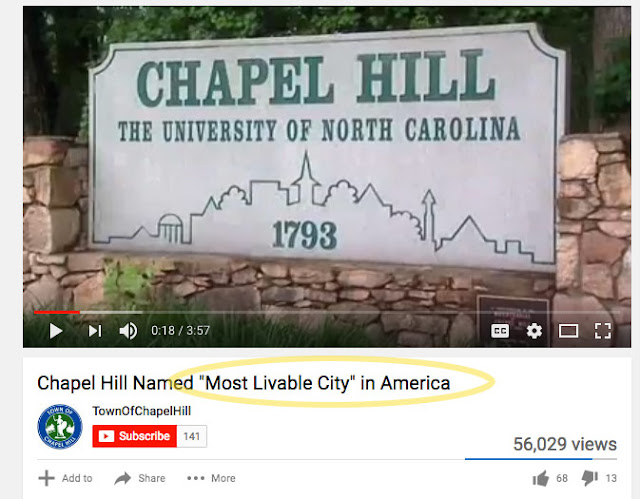The latest casualty of change is the Midway Pro-Bowl, the behemoth complex in basement of the bleak strip-mall at Snelling and University.
"Yeah, it's sad," the alley keeper told me the other day. "We're closing on the 15th [of September]. Auctioning off all the equipment, and that's it."
The already surly employees have reached new heights of indifference, and the pallor of the place is bleak.
"It's the best alley in Saint Paul," my almost-pro-bowler buddy told me a while back. "What's going to replace it?"
Of particular interest to me were the murals on either side of the massive 16-lane complex. They're gaudy bright neon depictions of each Twin City skyline, Saint Paul on the left and Minneapolis on the right. Particularly noteworthy was the fact that the skylines have been updated, so that the Minneapolis landscape includes the new Vikings Stadium, for example. They are 90s cool!
"Yeah the artist is named Tony Stabke (sp?)," said the guy behind the counter. "He's great. He's always working. Someone just commissioned him to do some work in Fargo. We looked at keeping them, but they're attached to the sheet rock, right on the steel studs. There's no way..."
My Noteworthy Bowling Alleys of the Twin Cities Guide Booklet is sadly out of print, and I think I'm going to have to re-write it with updates before I make new copies. But in the meantime, here's the description of the Midway Pro-Bowl.
In the meantime, between now and the 15th, head over to the bleak Snelling and University parking lot and visit the Pro-Bowl one last time. You won't regret it.
Midway Pro-Bowl
Even looking straight at it, you can’t see Midway Pro Bowl. But it’s there, subterranean, a vast basement bowling alley camouflaged as absolutely nothing in a setting only noteworthy for its drab pathos. Midway Pro-Bowl lies smack in the middle of one of the ugliest strip malls in the city, just off the bus Snelling and University corner in the heart of Saint Paul.
The strip mall and its unwhelming entrance is surrounded by a vast surface parking lot, almost always half empty, and to enter Midway Pro-Bowl you must first learn to see it, become one of the worthy few who can distinguish it from the vacant shops or the Walgreen’s on either side. Yet to open the thin door and descend down the stairs is to enter another world, an oasis in time and space that feels like bowling on Mars.
Despite its inelegant trappings, the Midway Pro Bowl might be the alley most true to spirit of the Bowling Age. Here bowling is not kitsch, not hip, but quotidian. There are leagues and young people, bowlers speaking Korean, English, black and white. Here vast sets of lanes stretch out before you like a blank canvas underneath the asphalt. Here bowlers roll toward excellence in a characterless waste- land.
And this is quality bowling. These are composite lanes backed by purple and orange 1980s decor, creating a timeless atmosphere that can feel liberating. During the day, men bowl alone, practicing shots. They are bowling away from Wal-Mart toward the freeway invisible through the mass of the earth.
The strip mall and its unwhelming entrance is surrounded by a vast surface parking lot, almost always half empty, and to enter Midway Pro-Bowl you must first learn to see it, become one of the worthy few who can distinguish it from the vacant shops or the Walgreen’s on either side. Yet to open the thin door and descend down the stairs is to enter another world, an oasis in time and space that feels like bowling on Mars.
Despite its inelegant trappings, the Midway Pro Bowl might be the alley most true to spirit of the Bowling Age. Here bowling is not kitsch, not hip, but quotidian. There are leagues and young people, bowlers speaking Korean, English, black and white. Here vast sets of lanes stretch out before you like a blank canvas underneath the asphalt. Here bowlers roll toward excellence in a characterless waste- land.
And this is quality bowling. These are composite lanes backed by purple and orange 1980s decor, creating a timeless atmosphere that can feel liberating. During the day, men bowl alone, practicing shots. They are bowling away from Wal-Mart toward the freeway invisible through the mass of the earth.
The massive expanse of the sixteen lanes are flanked on either side
by a pair of satellite rooms, alcoves away from the incessant action.
To the right, a well-lit pro shop hints of conspiracy. Old men murmur inside and, if you’re not in a league, you probably don’t feel
welcome here.
On the other end the bar is tucked away. Everything seems carpeted, even the Grain Belt Premium, which by the way rests at dive bar prices. An inelegant haven, to be sure, but also one of the more colorful places to drink in the area, despite the drab orange surroundings.
On the other end the bar is tucked away. Everything seems carpeted, even the Grain Belt Premium, which by the way rests at dive bar prices. An inelegant haven, to be sure, but also one of the more colorful places to drink in the area, despite the drab orange surroundings.
Along the seemingly endless walls of the Midway you will find the
usual bowling accoutrements embedded: the trophy cases, the vending machines, the racks of colorful balls, acres of unmoveable tables.
This is where your league meets; pro bowl indeed. And rest assured
there will be plenty of parking.

























































